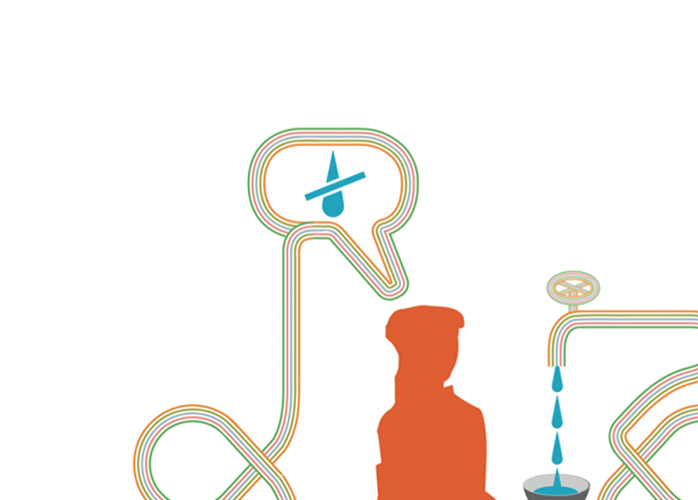In an area outside Hyderabad, India, between the suburbs and the countryside, a young woman—we’ll call her Shanti—fetches water daily from the always-open local borehole that is about 300 feet from her home. She uses a 3-gallon plastic container that she can easily carry on her head. Shanti and her husband rely on the free water for their drinking and washing, and though they’ve heard that it’s not as safe as water from the Naandi Foundation-run community treatment plant, they still use it. Shanti’s family has been drinking the local water for generations, and although it periodically makes her and her family sick, she has no plans to stop using it.
Shanti has many reasons not to use the water from the Naandi treatment center, but they’re not the reasons one might think. The center is within easy walking distance of her home—roughly a third of a mile. It is also well known and affordable (roughly 10 rupees, or 20 cents, for 5 gallons). Being able to pay the small fee has even become a status symbol for some villagers. Habit isn’t a factor, either. Shanti is forgoing the safer water because of a series of flaws in the overall design of the system.
Although Shanti can walk to the facility, she can’t carry the 5-gallon jerrican that the facility requires her to use. When filled with water, the plastic rectangular container is simply too heavy. The container isn’t designed to be held on the hip or the head, where she likes to carry heavy objects. Shanti’s husband can’t help carry it, either. He works in the city and doesn’t return home until after the water treatment center is closed. The treatment center also requires them to buy a monthly punch card for 5 gallons a day, far more than they need. “Why would I buy more than I need and waste money?” asks Shanti, adding she’d be more likely to purchase the Naandi water if the center allowed her to buy less.
The community treatment center was designed to produce clean and potable water, and it succeeded very well at doing just that. In fact, it works well for many people living in the community, particularly families with husbands or older sons who own bikes and can visit the treatment plant during working hours. The designers of the center, however, missed the opportunity to design an even better system because they failed to consider the culture and needs of all of the people living in the community.
This missed opportunity, although an obvious omission in hindsight, is all too common. Time and again, initiatives falter because they are not based on the client’s or customer’s needs and have never been prototyped to solicit feedback. Even when people do go into the field, they may enter with preconceived notions of what the needs and solutions are. This flawed approach remains the norm in both the business and social sectors.
As Shanti’s situation shows, social challenges require systemic solutions that are grounded in the client’s or customer’s needs. This is where many approaches founder, but it is where design thinking—a new approach to creating solutions—excels.
Traditionally, designers focused their attention on improving the look and functionality of products. Classic examples of this type of design work are Apple Computer’s iPod and Herman Miller’s Aeron chair. In recent years designers have broadened their approach, creating entire systems to deliver products and services.
Design thinking incorporates constituent or consumer insights in depth and rapid prototyping, all aimed at getting beyond the assumptions that block effective solutions. Design thinking—inherently optimistic, constructive, and experiential—addresses the needs of the people who will consume a product or service and the infrastructure that enables it.
Businesses are embracing design thinking because it helps them be more innovative, better differentiate their brands, and bring their products and services to market faster. Nonprofits are beginning to use design thinking as well to develop better solutions to social problems. Design thinking crosses the traditional boundaries between public, for-profit, and nonprofit sectors. By working closely with the clients and consumers, design thinking allows high-impact solutions to bubble up from below rather than being imposed from the top.


Comentarios recientes